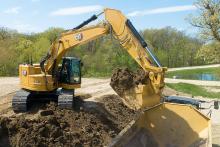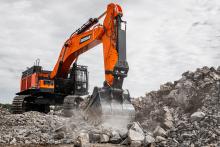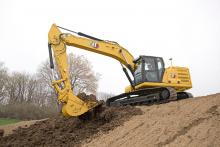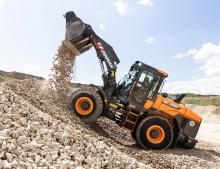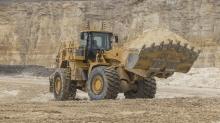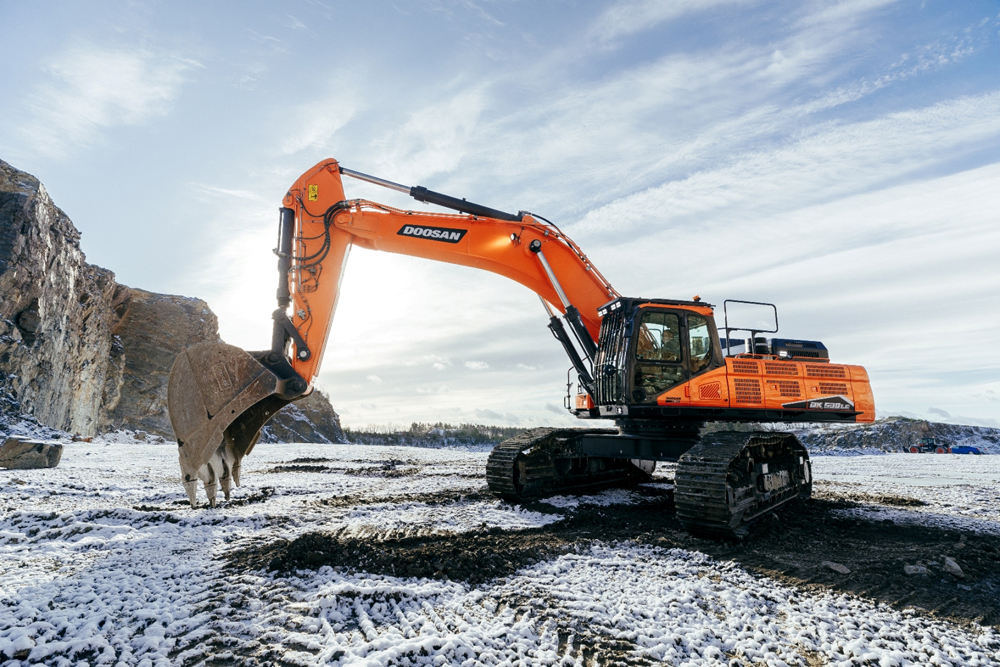
The market for earthmoving equipment is the largest of all the off-highway machinery segments. New wheeled loaders and excavators are now being made available to meet the latest requirements and benefiting from the latest technology.
Technology
A key trend in the construction machinery sector is one of digitisation, which all the main manufacturers are keen to embrace. Telematics systems are becoming increasingly important in the earthmoving equipment sector. Manufacturers are keen to boost uptime and reduce downtime by improving fleet management operations for their customers.
Many systems are coming to market. Doosan Infracore Europe for example has updated the company’s DoosanCONNECT telematics management system to include cellular service for the life of the Doosan machine. Satellite coverage will remain included for 36 months at no cost. The DoosanCONNECT telematics is available for Doosan excavators, wheeled loaders, material handlers and articulated dump trucks. The connected machine solution provides enhanced remote equipment monitoring to maximise machine uptime protection.
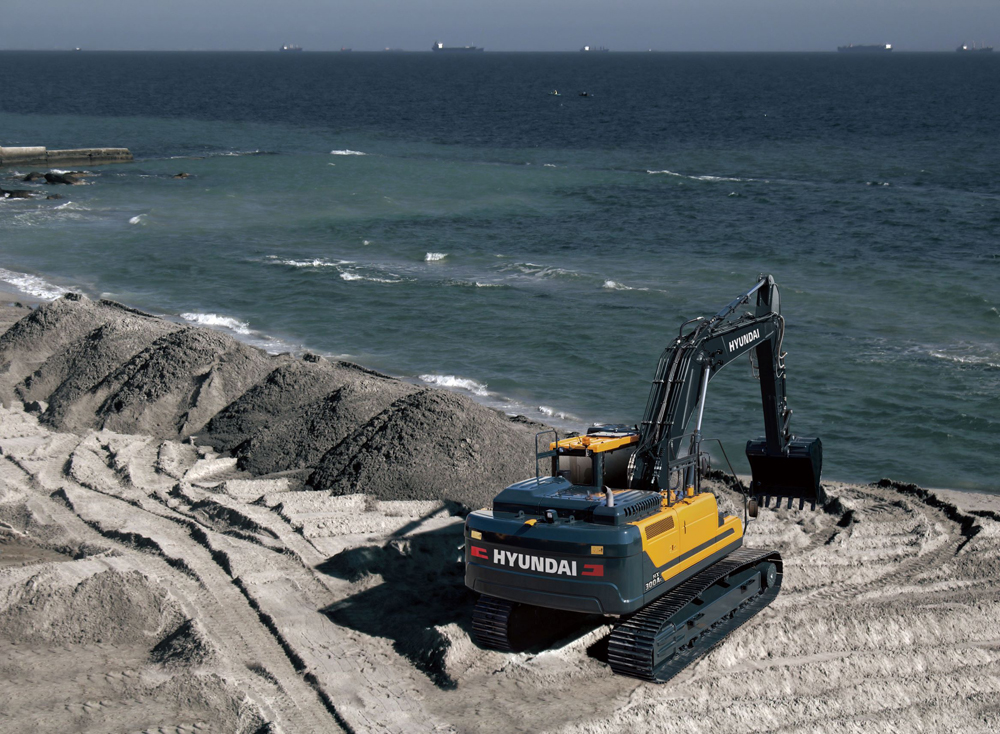
Hitachi is similarly keen to make machine data easily accessible for its customers, offering remote monitoring solutions. The firm says that these tools make it easier for owners to locate individual machines and check operational data, such as working hours. Hitachi’s excavators can be connected to its remote monitoring system, Global e-Service, through a software platform developed by ABAX. The data can also be accessed via smartphone using the ConSite Pocket app.
And sophisticated tools from Hyundai include the engine connected diagnostics (ECD) package, which provides technicians and dealers with a diagnostics report (via e-mail, mobile, app or Hyundai’s HiMATE telematics system). There is also the machine connected diagnostics (MCD) system, which allows the user to use machine performance data, resulting in improved uptime. The firmware over the air (FOTA) system allows for remote software updates for the machine control unit (MCU) and remote machine control unit (RMCU), whenever there is an update available in HiMATE. There is also the Hyundai Construction Equipment offline equipment diagnostics (HCE-DT) tool providing troubleshooting information using HiMATE. In addition, customers can have a monthly report by email (generated by HiMATE) that helps improve fleet management, which includes a summary of operation and fuel consumption analysis.
Excavators
In the excavator segment, Doosan is now offering two new models for the 50tonne class, with high productivity as a key feature of both. The machines are suited to tasks such as large-scale earthmoving, secondary breaking, highway construction and general construction.
High power is said to be delivered by the Scania DC13 diesel, which delivers 294kW. The engine benefits from a new emissions solution that exceeds the Stage V requirements with DOC/DPF+SCR aftertreatment technology. Maintenance of the DPF has been reduced, with a long 60-hour automatic regeneration interval and an even longer, 8,000-hour ash cleaning interval, compared with the previous DPF in the DX-3 generation machines.
The high performance of the DC13 engine is combined with a Virtual Bleed Off (VBO) hydraulic system (D-Ecopower+) and the new generation Smart Power Control Technology (SPC3), boosting fuel efficiency by 11%.
Increased pump capacity and the high power engine produces up to an 8% increase in productivity. There are four power modes available on both machines, simplifying operation compared to the more complex choice of eight power modes and SPC combinations in the previous generation machines.
Key new features in the cab include a larger LCD touchscreen gauge panel, keyless start, improved air conditioning, 360° cameras, an optional ultrasonic obstacle detection system and LED lighting. As standard, 360° cameras provide full visibility around the excavators and allow the operator to see a top-down view of the area outside the machine.
The DX490LC-7 and DX530LC-7 models are factory-installed with Doosan’s state-of-the-art DoosanCONNECT wireless monitoring system. This web-based fleet management solution can be used for monitoring the performance and security of machines and preventative maintenance.
The machines also have a lifetime free cellular service allowing customers to use the DoosanCONNECT service remotely. Satellite service will be offered free-of-charge for a three-year period.
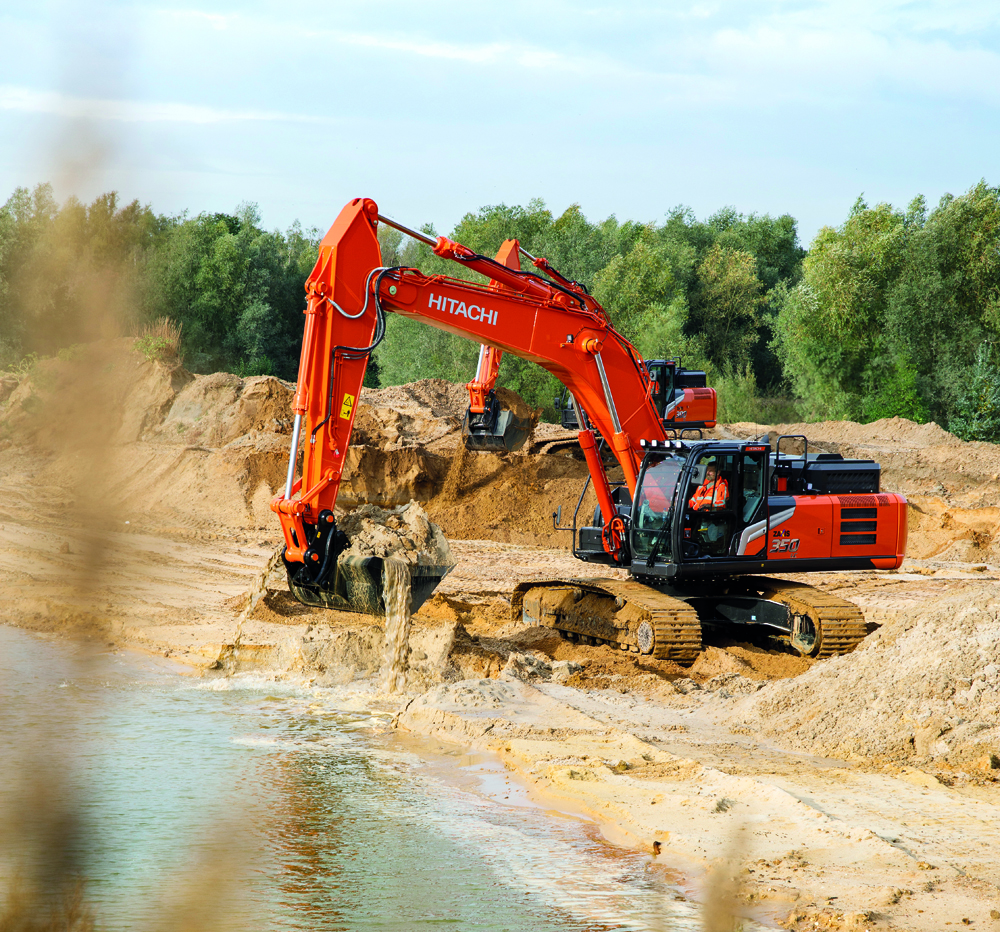
From Hyundai come the 22tonne class HX220AL and 30tonne class HX300AL excavators, which are Stage V compliant. Hyundai Construction Equipment Europe (HCEE) says that its new machines suit duties in infrastructure works and general construction. Benefiting from the latest Stage V compliant engine platform, the machines also have sophisticated hydraulic flow regulation, improved operator controls with 2D/3D machine guidance, new safety features, and improved uptime and productivity.
The HX220AL and HX300AL incorporate some of Hyundai’s latest technologies. For both machines, the sophisticated electric pump independent control (EPIC) system governs pump regulation independently, optimising fuel efficiency and controllability. The auto safety lock prevents unintended operation/start of the excavator, while the eco guidance system indicates inefficient operation status, further reducing fuel wastage. The machine guidance/machine control (MG/MC) system indicates work status and automatically controls the attachment. The MG functions displays bucket tip position and provides positioning guidance for the operator. The MC function automatically handles grading with the bucket tip or face and has an automatic stop control.
The Stage V compliant Cummins diesels have an all-in-one exhaust aftertreatment system, with its exhaust muffler integrating the diesel oxidation catalyst (DOC), the DEF injector (SCR) and a diesel particulate filter (DPF). The engines no longer need exhaust gas recirculation (EGR) due to improvements with the other technologies. This makes the engine layout simpler, while increasing reliability and easing maintenance, as well as reducing fuel consumption and operating costs.
The HX300AL is available in standard long crawler, narrow crawler and raised undercarriage versions, as well as having standard, two piece and long reach boom options.
Power for both the HX220AL and HX300AL comes from a Cummins B6.7 diesel, rated at 130kW for the former and 194kW for the latter. The HX220AL weighs in at 22.1tonnes while depending on specification, the HX330AL has operating weights from 30.2-33.7tonnes.
Liebherr's new generation of crawler excavators is said to offer high-performance hydraulics and low fuel consumption. The latest R 924 and R 930 are 24tonne and 30tonne class machines and part of Liebherr’s generation 8 range.
Key features include high working efficiency, high productivity, ease of control, low fuel consumption and versatility. According to the firm, the R 924 crawler excavator offers a low average fuel consumption of just 9.9litre/hour, comparing well against its competitors. The R 930 meanwhile is able to work up to eight days on a full tank. Other advantages of the two latest models are said to be are efficiency, cost-effectiveness, smooth hydraulics, versatility and precision.
Equipped with the positive control hydraulic system, the generation 8 excavators have been optimised for smooth combined movement and improved overall performance according to Liebherr. The generation 8 machines offer reduced vibration, low noise levels in the cab and also low external noise emissions.
Loaders
Doosan is now offering a new line-up of general purpose performance buckets covering capacities from 2-6.7m3 for its wheeled loader range. The new range of general purpose buckets represents the first stage in an expansion of the choice of new wheeled loader work tools from Doosan.
The key features of the new range include larger capacities, while customers can also ensure that their new buckets are tailored for their applications. Manufactured using Hardox steel, the new range offers increased wear resistance. The buckets are designed to maximise penetration into the muckpile, further reducing fuel consumption.
New shock absorbers also reduce wear and tear on both the wheeled loader and the bucket structures. Doosan incorporated this feature after two years of tests. The stoppers on the buckets are mounted on a durable rubber pad, which reduces the shocks and noises when rolling the buckets back.
In addition to deciding on teeth or bolt-on edges for the buckets, customers can choose from a wide selection of bucket features such as coupling systems, floor shapes, spill guard types, bucket protection and blade shapes.
Liebherr is introducing three mid-range wheeled loaders, the L 526, L 538 and L 546. Key improvements include more powerful drives, modifications to the lift arms and a redesigned operator's cab. The machines use Liebherr’s proven exhaust gas treatment system and meet the Stage V/Tier 4 Final requirements guidelines. In addition, the latest assistance systems and new joystick steering from the XPower large wheeled loaders are available for the mid-range wheeled loaders.
The firm has optimised the proven hydrostatic travel drive on all three models, giving the L 538 and L 546 models significantly more power while the L 546 is now powered by a new six-cylinder diesel. However, the efficient hydrostatic travel drive means that fuel consumption is low, as are CO2 emissions.
The firm is offering two lift arm variants for its mid-range loaders. One option is the z-bar kinematics with high forces in the lower lift arm positions. The alternative is the parallel kinematics with enormous holding forces in the upper areas as well as parallel guidance.
Liebherr has redesigned both lift arm variants for the new series. The L 538 and L 546 models have larger lift cylinders, increasing lifting force by 20% compared to the previous generation. The newly reinforced bucket arms with z-bar kinematics increase robustness.
The electro-hydraulic pilot control in combination with the standard bucket programming function means that bucket and forklift positions can be set using the in-cab display. Meanwhile, the optional stroke limit damping reduces vibration for the machine operator.
Joystick steering is available for the mid-range wheeled loaders on request. Liebherr is also offering all assistance systems from the XPower large wheeled loaders in the new mid-range wheeled loader series. This includes active personnel detection at the rear, the weighing device with Truck Payload Assist, integrated tyre pressure monitoring and adaptive lighting. The front space monitoring and the Skyview 360° camera system are also available.
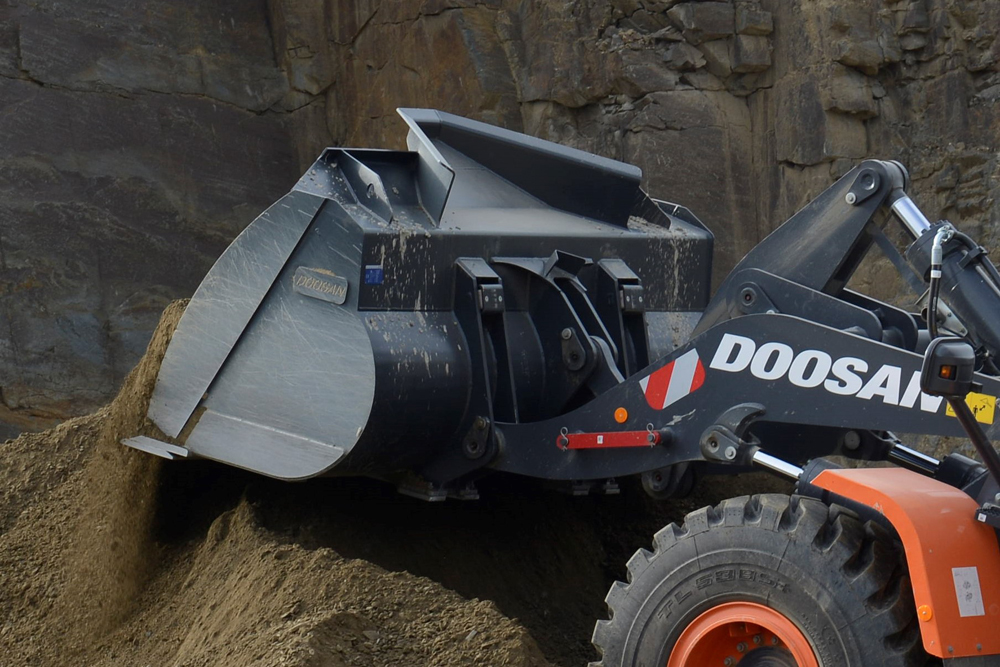
The L 526 weighs 1.8tonnes, has a bucket capacity of 2.1m3 and is powered by a diesel rated at 100kW. The L 538 weighs 13.5tonnes, has a bucket capacity of 2.6m3 and is powered by a diesel rated at 120kW. The L 546 weighs 14.2tonnes, has a 2.8m3 bucket and has power from a 138kW diesel.
Volvo CE has updated all of its H-Series wheeled loaders from the compact L60H up to top-of-the-range L350H.
The rimpull control system now comes as standard on all H-Series models. This function allows operators to minimise wheel spin and optimise the balance between rimpull and hydraulic functions, reducing tyre wear and fuel consumption for more efficient bucket filling.
Volvo CE’s Volvo Co-Pilot in-cab touchscreen provides access to Load Assist applications. Tyre pressure monitoring helps to save fuel and prolong tyre life. A map application allows better understanding of the site layout and real-time site traffic situation, allowing drivers to adjust their driving behaviour accordingly. The load weighing app now includes two new task modes – stockpiling and processing – adapting the on-screen layout and information displayed to the task.
Both the rearview camera and radar detector system are now displayed on the screen. Another new tool is the coaching app, which is designed to maximise operator performance, to get the most out of the machine and also reduce operating costs.
In addition, servicing is said to be easier, helping to reduce downtime. Oil change intervals have been extended while customers can specify the biodegradable hydraulic oil option, again with longer replacement intervals.

